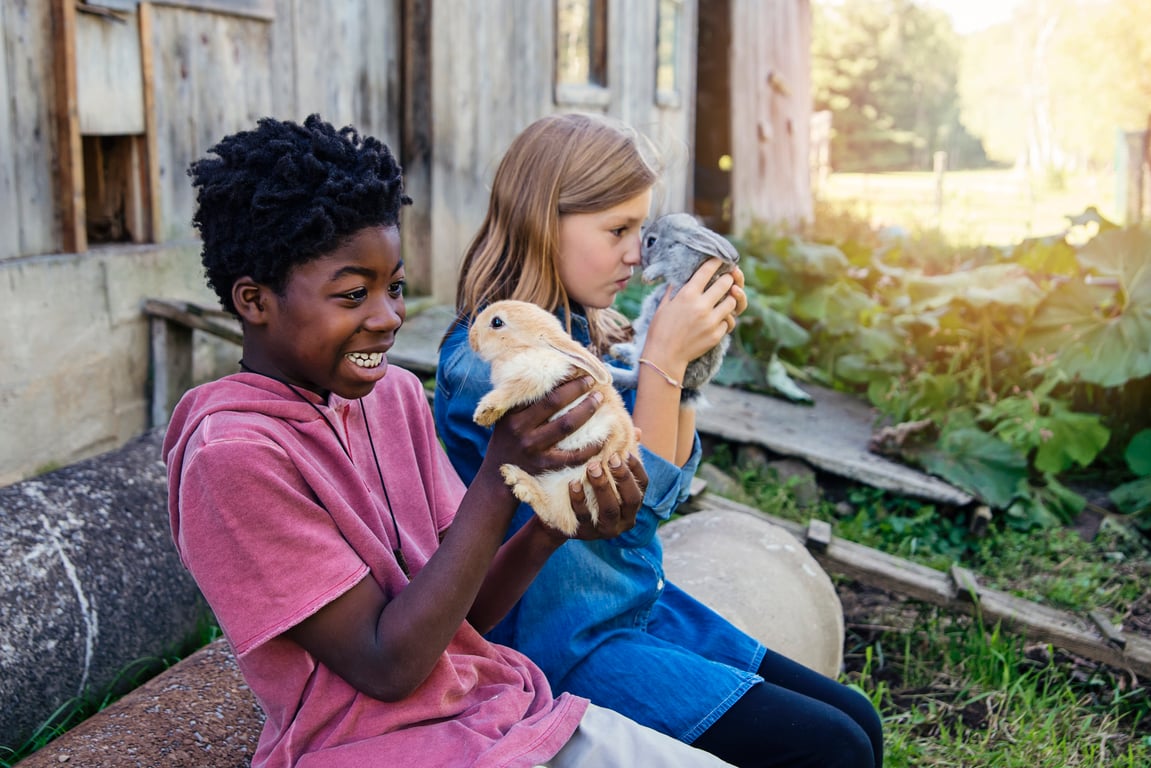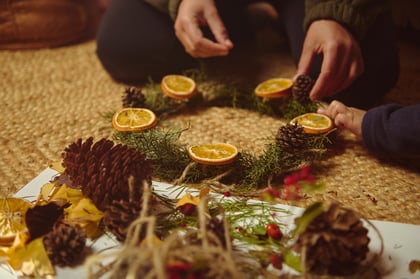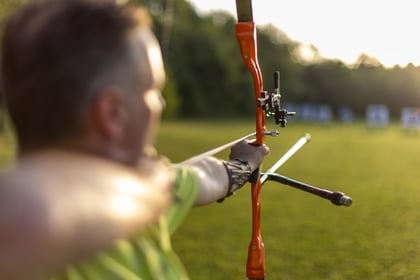How to Raise Rabbits as Pets on A Hobby Farm

Want to raise rabbits as pets on your hobby farm, but need a bit of guidance? You’re in the right place. Rethink:Rural writer Mara Watts shares her advice and experience on raising happy, healthy bunnies.
Out of all the animals I’ve raised on our homestead – pigs, goats, chickens, quail and rabbits – raising rabbits has been, by far, the most rewarding.
There’s something special about a sweet little ball of fur excited to see you as you walk up to their hutch. One of my males (aka a buck) would even make a sweet buzzing sound whenever I came near. That was his way of asking for attention.
But their sweet personalities are just one reason rabbits make such wonderful pets.
They’re also quiet, making little to no noise and their manure is what us gardeners like to call “garden gold.” Just add a small pile around the base of your plants, cover with soil and water. The results are amazing! We’ve grown more lush, green and productive plants than ever before.
If you’re thinking about adding rabbits to your hobby farm, then you’ve come to the right place! I’ve been raising rabbits for just over five years now. It’s rewarding and full of snuggles and bunny kisses.
In this article, I’ll give you practical tips, advice and lessons learned to ensure you are equipped with the knowledge to raise healthy and happy bunnies successfully.
How to Choose the Right Pet Rabbits for Your Hobby Farm
Rabbits come in all shapes, sizes and colors, and each breed has its own unique personality, care needs and living requirements.
If you’re ready to take on a pet rabbit (or two), the first step is to research the different breeds to find the right one suited for you.
Best Pet Rabbit Breeds
1. Holland Lop
The Holland Lop is my favorite breed of rabbit to raise. They are small – so they’re easy to hold and cuddle – and they have cute floppy ears.
If socialized well, they are friendly and curious, making them great pets for kids and beginners.
If well cared for, the Holland Lop can live about 7 to 10 years, according to PetMD. And even when they’re full-grown, they stay relatively small, weighing between 2 and 4 pounds.

2. Netherland Dwarf
Another small and cute breed, the Netherland Dwarf is a compact rabbit with short legs, a round head and a flat face. Their ears are short and stick up, making them easy to clean and maintain. This breed is so small; at its mature weight, they are only 1.5 to 3 pounds.
In my opinion, this breed isn’t as friendly and cuddly as the Holland Lop. They tend to be more skittish and frighten easily. But if they are handled at a young age and are kept in a quiet, calm environment, they make excellent pets.
3. Mini Rex
The rex breeds are commonly used as meat rabbits, but they make great pets, too. The mini version is the best option as it is smaller – weighing about 4 pounds – and easier to handle. They are commonly known for their velvety-soft fur, and they come in many different colors.
Mini Rex rabbits don’t require much space, so they are great to keep indoors or in smaller hutches.
Other pet rabbit breeds to consider include:
- Lionhead rabbit
- English Lop
- Flemish Giant (Note: these rabbits get very big, hence the word “giant” in its name)
- Angora rabbit
From Kit to Adult Rabbit: How To Raise Baby Bunnies
Baby rabbits, also known as kits, are often available for purchase from a breeder or fellow homesteader. Depending on the breed and the rabbit's lineage (ie, if the rabbit comes from a family of show rabbits), the price of the kit will vary.
Or, if you’re planning to breed and raise kits, there are a few things to consider.
Nest Boxes
Pregnant mothers need a nest box to give birth, nurse and care for her young. Just like a burrow, the nest box provides safety for her and her kits.
Fill the nest box with hay and mama will do the rest.
When kits are born, check on them regularly, but do not hold them until their eyes are open. Instead, gently touch the bedding around them to leave your scent. Doing this during the first week helps the mother rabbit get used to your presence. When it comes time to hold the babies, she will be more comfortable and trusting.
Also, be sure to keep the nest box clean of urine and feces. This will prevent the babies from contracting parasites and other diseases.

Food and Water Essentials for Kits
For the most part, mama does most of the work. She nurses her kits until they are old enough to drink water and eat pellet food.
When to Move Kits Away from Their Mother
Young kits should stay with the mother rabbit until they are between 8 and 12 weeks old. At that point, they will need to be moved to their own living space to prevent aggression, dominance, and unwanted breeding.
Rabbit Hutches and Enclosures for Creating the Best Shelter
Rabbits can be kept indoors or out. This, of course, depends on where you live and how much room you have in your house or out in the yard.
One or two rabbits are easier to keep indoors than an entire colony. Consider your current living situation before leaping into rabbit caretaking.
Tips on Keeping Pet Rabbits Indoors
Because we have several rabbits at any given time, we don’t keep them indoors. But if you’d like to keep your pet rabbit indoors, it’s crucial to provide them with an enclosure – one that fits in your space and gives them plenty of room to move about.
Many indoor rabbit owners will set up a space, or an entire room, for their bunny. This area is where they sleep, play, eat, and use a litter box.
One reason we decided not to keep rabbits indoors was the amount of bunny-proofing it would require.
With kids around, there are just too many things a curious rabbit could chew on or get hurt by.
It’s also important to note that indoor rabbits need to be litter-trained. But once they get the hang of it, they’ll usually prefer using their litter box.
Tips on Keeping Rabbits Outdoors
If you plan to keep rabbits outdoors, there are four things you need to consider:
1. Keeping them well contained,
2. The weather,
3. Cleaning,
4. And predator-proofing their hutch.
1. Keeping Rabbits Contained
Plan to house one rabbit per hutch or cage, unless a mother bunny is raising her kits. In that case, plan to keep the kits with her for up to 12 weeks. At that point, the rabbits will need to be separated.

Prevent Digging
No matter the breed, rabbits are notorious diggers, especially females when they are at kit-rearing age. Female rabbits will instinctively dig a burrow in preparation for raising and housing their young. Because of this, they can (and will) eventually dig their way out of their enclosure.
When it comes to bucks, if they live close to the female (like ours), they can, and will, dig their way into her domain. And yes, this did happen, and here’s what we learned: Females only like having male rabbits in their area for an extremely short amount of time. Unneutered bucks will attempt to mate over and over. This becomes annoying for the female, and she may become aggressive towards him.
To remedy this, and to keep everyone safe, we added chicken wire to the bottom of their run. This way, they could still enjoy fresh grass without digging out, or into each other’s area.
2. Weather Considerations
The weather is another key consideration. We live in an area where the summertime is hot and humid, and the winter is frigid. Because rabbits are susceptible to heatstroke in hot weather, we do our best to help our rabbits adjust to fluctuating temperatures:
Tips For Keeping Rabbits Outside in Spring/Summer (Heat):
- Provide plenty of cool, fresh water and healthy foods to nibble on, like greens and timothy hay.
- The bottom of their hutches is lined with garden mesh so that their feet don’t get caught, but fresh air can flow freely through.
- Add fans during extreme heat to help keep air moving.
- Give them extra time in shaded grass areas – they’ll lay down and stretch out on the cool ground.
- Put a large tile square in their hutch. The tile cools overnight and provides the rabbits with a place to lay and stretch out if they aren’t on grass.
- Tractor their hutch to shady spots.
Tips For Keeping Rabbits Outside in the Fall/Winter (Cold)*:
- Again, we provide plenty of cool, fresh water and healthy foods to nibble on throughout cold temperatures. Unlike summer, rabbit waterers can freeze, making it very important to change the water daily. We’ll check the waterers every morning and evening to make sure they haven’t frozen.
- Provide them with a thick layer of bedding – we’ve used pine shavings and hay. Hay seems to work best and is easier to clean in the winter.
- If the female rabbits have young kits, we will leave the nest box filled with clean bedding to keep everyone warm.
- During a snowstorm or low temperatures, we’ll lay a tarp over the enclosure – ensuring proper airflow – to keep wind and snow out.
- We limit time on the ground to prevent their feet from getting too cold.
- Tractor their hutch to sunnier areas to keep them warm.
- Regular handling and cuddling are necessary, too, to ensure the rabbits are healthy and responding like normal.
Note: If we adopt an older rabbit, we’ll slowly introduce him or her to our outdoor climate – unless, of course, they were already an outdoor rabbit. This is important, as rabbits cannot regulate their body temperatures well and must adapt before being exposed to hot or cold temperatures. Also, rabbits that live outdoors will naturally grow a coat that keeps them warm in the cold.
3. Hutch Cleaning
No matter the weather, rabbit hutches have to be cleaned regularly.
To keep things simple for myself, I’ll clean the poop out every day – this helps prevent parasites, because they will also pee where they poop, keeping it wet – and clean their bedding once a week (more often as needed).
We did litter train our rabbits, but bunny litter is expensive, so regular clean-outs are an absolute must.
4. Predator Proofing
And, lastly, predator proofing.
Predators like foxes, hawks, snakes and coyotes are common in our area. So keeping them out and providing our rabbits with a safe home is important.
The chicken wire on all sides, on top and bottom of the enclosure is extremely helpful. It keeps aerial predators from flying down and ground critters from digging in.
Checking their hutch every day or so also helps, especially if the rabbits are digging. I also make it a point to check all corners of the hutch to ensure a snake isn’t hiding somewhere.
What Do Rabbits Eat? Feeding Tips for Raising Healthy Bunnies
Rabbits require a well-balanced diet to help them grow, develop and remain healthy. Rabbits are notorious for digestive issues, so when introducing new foods, do so gradually and watch for stomach upset.
Daily Rabbit Essentials:
- Plenty of fresh water
- Hay: Timothy hay is the most common, but rabbits also enjoy orchard, meadow, and Bermuda grass hays. For kits, offer alfalfa hay but once they reach adulthood, limit alfalfa as it is high in protein and calcium.
- Rabbit pellets: Found at most pet supply stores, feed according to the bag’s instructions.

Healthy Treats for Rabbits:
Limit the following to once or twice a week to prevent digestive issues:
- Fresh vegetables like leafy greens, kale, and carrot tops: We’ll also offer them small amounts of cucumber, carrot.
- Fruits (in moderation): Rabbits enjoy a slice or two of banana and apple.
- Allow them to free range on grass: Rabbits enjoy eating clover and fresh grass, but avoid putting them on freshly mowed grass.
Foods to Avoid Feeding Rabbits
Many people believe you can feed rabbits iceberg lettuce and unlimited amounts of carrots, but this isn’t the case.
Iceberg lettuce, even in small quantities, can cause diarrhea, while carrots are high in sugar, which can cause digestive issues and obesity if consumed excessively.
Other foods to avoid include starchy vegetables like potatoes, breads, sugary and salty foods, and old, moldy foods.
Keeping Your Pet Rabbits Healthy on the Homestead
For the most part, pet rabbits are easy to keep healthy on a hobby farm. But, just like any other animal, there are a few health problems that rabbits can experience.
Note: For any and all health issues in pet rabbits, always consult your local veterinarian for proper treatment and prevention protocols.
Common Rabbit Health Issues to Watch For
Gastrointestinal Issues
Gas and other gastrointestinal issues can come on suddenly and be life-threatening. Gastrointestinal stasis is extremely common and can be caused by poor diet, infections, dental problems and even stress.
Symptoms include swollen belly, lethargy, heavy panting and loss of appetite.
Dental Problems
Those cute and signature two-front teeth can become problematic if not regularly checked and tended to.
Rabbits’ teeth grow, which is why they enjoy chewing on things. If their teeth become too big, they will cause the rabbit difficulty or pain while eating.
Symptoms of overgrown teeth include loss of appetite, weight loss and even drooling.
Foods like hay and crunchy treats can help wear teeth down enough to prevent dental problems. Chew toys can also be helpful.
If you notice a dental problem, consult your local veterinarian for guidance.
Respiratory Issues
The nose - another cute, twitchy little feature on rabbits can signal there’s an issue if the following symptoms occur:
- Sneezing
- Runny nose
- Eye discharge
- Difficulty breathing
If you notice these, your rabbit could be experiencing a respiratory infection, also known as “snuffles.” Bacteria cause snuffles and are often triggered by environmental stress.
Parasites
Outdoor rabbits are much more prone to parasitic infections than those that live indoors. This is due to the close proximity to the ground with the presence of bugs and worms. This is why I stress the importance of regular hutch cleanings, especially nest boxes when mamas give birth. Wet feces and urine can create a breeding ground for larvae and other parasites.
Also, ear mites and fleas can become an issue, especially for outdoor rabbits (but that doesn’t exempt indoor pets from this problem). Check the ears regularly for tiny black bugs and fleas on the skin. Consult a veterinarian for prevention and treatment for both internal and external parasites.
How to Tell Your Pet Rabbit is Happy and Thriving
Bunnies are expressive creatures, making it easy to pinpoint whether or not they are happy on the hobby farm.
A thriving rabbit will immediately pop up and greet you when you approach their hutch.
Bunnies that are bonded to their human caretakers express excitement by “having the zoomies.” Zoomies are an act of happiness and joy. They’ll run at high speeds, jump, and twist in the air – it’s the cutest thing you’ll ever see!
Also, a happy rabbit plays, digs, eats well and is full of curious energy.
For more tips and advice on raising animals on your hobby farm, be sure to check out:
- How to Get Started Raising Ducks on Your Hobby Farm: A Beginner’s Guide
- How to Get Started Raising Pigs on Your Hobby Farm
- 3 Unique and Creative DIY Homestead and Garden Structures, which features our very own DIY rabbit hutch











Your email address will not be published. Required fields are marked*